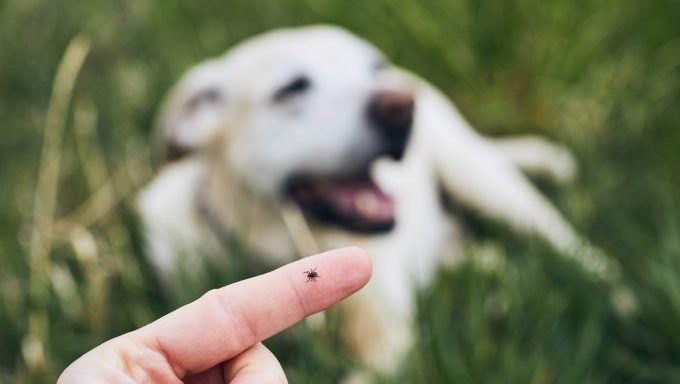
Watching a dog having fun while playing in a pile of leaves is very entertaining! Dogs love leaves – and unfortunately, so do ticks. Tall brush, leaf litter, and garden decay make the perfect hiding spots for these nasty parasites. While fall is an enjoyable season for taking a dog hiking, hunting, or camping, ticks are still outdoors, doing their dirty work.
Ticks are pervasive and have been spreading steadily across the USA. Ticks can transmit microorganisms that cause mild-to-severe disease in dogs. Most people are familiar with Lyme disease as it can debilitate humans, but ticks are also responsible for ehrlichiosis, Rocky Mountain spotted fever, anaplasmosis, hepatozoonosis, and babesiosis.
Dogs Love Leaves…So Do Ticks
No one wants to keep their dog away from a glorious pile of leaves, off a hiking trail, or out of the woods. Taking preventative action is the only way to keep your pup protected. Work with your veterinarian to keep your dog on a year-round flea and tick medication. There are many chewable and topical preventatives on the market. Your vet can help you choose what is best for your dog and your climate.
It’s important to understand that no tick preventative is 100% effective. Screening annually for tick-borne infection will catch diseases early and help your dog make a recovery.
Dr. Mike Paul, DVM, suggests you check your dogs for ticks daily, especially after playing outdoors. Look between the toes, inside the ears, and around the ear folds as well as under the chin and neck area, and in the groin and armpits. Ticks can be difficult to see, so you may need to run a grooming comb over these spots if your dog is dark-colored or has long, thick fur.
Removing a Tick
Removing a tick that has attached itself to your dog is a fairly simple (yet disgusting!) process. You may wish to drop the tick into a container filled with isopropyl alcohol. Saving the tick will help your vet identify the parasite and create a treatment plan should your dog become sick.
Ticks may be everywhere, but with careful screening and vet-recommended preventatives, your pup can still enjoy bouncing through a big, backyard leaf pile.









